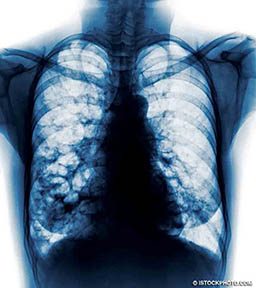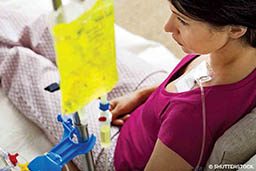I am planning to return to diving after a mild case of cutaneous decompression sickness (DCS), or “skin bends.” If I dive using nitrox, will that be enough to prevent recurrence of DCS?
Conservative diving is strongly recommended to avoid a repeat DCS incident. Cutaneous DCS has about a 20 percent chance of having a neurological component. The next event could be similar to this one or be significantly more severe. Diving conservatively, however, involves more than simply switching to nitrox. Consider the following recommendations:
- Dive with nitrox, but set your computer to “air” or “21 percent.” Clearly note the maximum operating depth (MOD) for the mix you’re actually breathing, and never exceed that depth. Use a partial pressure of oxygen (PPO2) setting of 1.4 or lower to avoid oxygen toxicity. If you reset your computer to a nitrox setting, then your potential bottom time will be calculated as longer and defeat the purpose of minimizing gas loading. Nitrox is only safer if you shorten bottom times.
- Spend an extended period at less than 30 feet, and add long safety stops to allow offgassing prior to surfacing. Extra stop time in shallow water is an effective way to reduce decompression stress and the likelihood of bubble formation.
- Select the most conservative setting on your computer to limit bottom time.
- Use a slow ascent rate of 20 to 30 feet per minute.
- Extend your surface interval, especially after long, deep and repetitive dives.
- Avoid exercise and load lifting in postdive hours, and do not engage in intense physical training for 24 hours after diving; perform only low-intensity exercise within that period.
- While diving, minimize your exercise intensity, and avoid overheating during the deepest parts of the dive.
- Take warm showers, enjoy the pool after diving, but avoid hot showers and hot tubs.
Being conservative is a trade-off. Divers want to maximize their bottom time to get the most out of every dive, but that maximum bottom time is also maximum inert gas (nitrogen) loading. Remain well rested and hydrated, and dive with a partner who has similar goals and follows similar practices. Adding small safety margins to each step can help provide a comfortable security cushion. Dive computers are powerful tools, but sound knowledge of diving physiology, good physical conditioning and adherence to thoughtful practices offer the best protection for divers. Every diver is unique, with varying susceptibility to decompression stress. Ultimately, only you can determine how much risk you want to take.
— Frances Smith, EMT-P, DMT
Can I safely dive after being diagnosed with a pulmonary bleb? I am healthy and fit with no history of pneumothorax.
The responsibility for the decision of whether to dive is generally left up to the individual and his or her physician. This decision, however, should be based on a medical evaluation and awareness of the risks involved in scuba diving.
Your best resource is a physician, preferably a pulmonologist, trained in dive medicine. A physician without the relevant experience may be thinking in terms of above-water activities and may not recognize the inherent dangers of breathing compressed gas at increased atmospheric pressure. A physician familiar with dive medicine would not likely give medical clearance to an individual diagnosed with a pulmonary bleb, which is a small blister or pocket of air trapped between the lung and the outer surface of the lung (visceral pleura). These spots are weaker than the normal lining of the lung and can occasionally break and cause air to leak from the lung into the chest cavity. A person who has pleural blebs usually has more than one, and all blebs are prone to leak at some time.

At depth there is normally a reduction in breathing capacity and an increase in breathing resistance caused by the higher gas density. At 33 feet, the maximum breathing capacity of the average scuba diver is only 70 percent of the surface value, and at 100 feet it is only 50 percent. The pressures on the lung caused by diving are likely to stimulate a bleb to rupture and leak air into the chest cavity. When this happens, the result is a spontaneous pneumothorax (collapsed lung). The lung collapse can occur without provocation or warning. Above water, pneumothorax is often associated with exercising, straining while lifting or performing some other physical task, but many times the affected individual is doing nothing out of the ordinary.
Since barotrauma can occur with hyperinflation of lung tissue, a diver’s lungs must be able to tolerate rapid changes in volume and pressure. Any weakness in lung structure or architecture may be predisposed to rupture from even slight overinflation in an otherwise healthy person. Pulmonary barotrauma, which can lead to rupture of the lung air sacs (alveoli), usually happens toward the end of a dive, even a shallow one. Escaping gas can enter one of four places: the subcutaneous tissues of the neck and chest wall; the area around the heart, causing pneumomediastinum (mediastinal emphysema); the pleural space between the lung and chest wall, causing pneumothorax; or the bloodstream, causing arterial gas embolism (AGE).
Please remember that most divers and dive-boat personnel are not trained to provide first aid to a diver with pneumothorax. While generally manageable above water, a spontaneous pneumothorax in the diving environment is likely to be fatal.
If you would like to be referred to a physician trained in dive medicine, call +1-919-684-2948 or email .
— Frances Smith, EMT-P, DMT
I’m going on a diving holiday in a few days, and my doctor has recently prescribed Rectogesic®, an ointment with possible side effects including low blood pressure, headaches and dizziness. Is it safe to dive after using this ointment?

Dizziness while scuba diving is hazardous, because it may cause disorientation or difficulty following essential safety protocols. Should you have an experience necessitating a rapid ascent, both you and your dive buddy would be at risk of DCS. In severe cases, lowered blood pressure may cause loss of consciousness, which if occurring underwater could cause drowning and death.
If you were to experience problems or complications such as dizziness or headache during a dive, it could be difficult to differentiate a dive-related illness from the medication’s side effects. This may lead to unnecessary treatment, but more important, it may delay treatment of a potentially dangerous condition.
Another issue to consider is that having an open wound or break in the skin while diving puts you at an increased risk for infection.
Considering the underlying medical problem and the possible side effects, scuba diving is probably not advisable while taking this medication. It is up to you and your physician, however, to make an informed decision. Individuals respond differently to medications, and it is possible that you may experience minimal or no side effects, especially given that this is a topically administered medication. When making the decision about whether to dive, consider your medical history and the other medications you take in addition to the medical condition being treated and any side effects experienced.
— Mala Trivedi, M.D.
NOTE: Rectogesic is an ointment prescribed for rectal use to reduce pain of rectal fissure. One gram of rectal ointment contains 4 mg of glyceryl trinitrate (GTN). The delivered dose from 375 mg of this formulation is approximately 1.5 mg GTN. The reported side effects and interactions with some common drugs are of most concerns for divers.
I have been diagnosed with stage 3 breast cancer. The doctor put a port in my chest a few days ago, and the current treatment plan involves six months of chemotherapy followed by a double mastectomy. I assume I will be beached for the next year, but my doctors aren’t trained in dive medicine, and I haven’t found much reputable research on the internet. While I currently feel too lousy to dive, I’d love to do a shallow dive as soon as I’m feeling better just to keep my gills wet. I have the following questions:
- Can I dive with a chemo port? Will the pressure be a risk?
- How about diving without a port during a chemotherapy cycle? Is there any correlation between chemo and DCS?
- Would depth and pressure be variables that would affect my safety?
We are sorry to learn of your diagnosis but are happy to hear your treatment is already under way. Your primary-care physician and/or oncologist are your best resources, and DAN is always available to consult with them as needed.
The general response about returning to diving after any major health issue, including cancer, is that you should be released by your physician for full and unrestricted activity, with no limitations on mobility or lifting and with excellent exercise tolerance for extended swimming or exertion. If you have any residual pain, especially with certain motions, knowing your baseline will help you recognize differences between the norm and potential DCS symptoms. Note, however, that such symptoms could lead to diagnostic confusion, so we strongly recommend you dive conservatively.
There is no recognized correlation between chemotherapy and DCS, but some cancer treatments occasionally lead to pulmonary fibrosis, and radiation can injure adjacent lung tissue; both of these conditions would increase your risk of pulmonary injury. Prior to returning to diving, consider asking for a pulmonary workup that includes a high-resolution spiral CT scan of your lungs to determine lung health.
Because water acts as a whole-body pressure garment, there is a documented fluid shift from the periphery (arms and legs) to the core (torso and head) during diving, even at very shallow depths. Your doctor should therefore also perform a thorough cardiac evaluation, including a stress test, to determine whether your heart and lungs will be healthy enough and capable of handling this fluid shift.

Cancer treatments often affect your immune system, and the diving environment can be a potential source of infection. Travel also exposes you to a host of infectious organisms not found in the home setting, so your immune status is a major point to discuss with your physician.
The good news is that chemo ports, if healed and free from complications, typically pose no problems with implanted devices such as a Port-A-Cath®. These ports are fluid-filled and thus noncompressible at recreational diving depths.
After you are cleared to dive, consider taking all your dive gear to a pool or other shallow, confined environment. Practice swimming laps, including overhand strokes, and include the motions of climbing a boat ladder and handing up gear to a crew member. Test your strap configuration, arm movements and weighting. You might have to adjust your straps or shift from integrated weights to a weight belt. Because a double mastectomy will potentially affect the chest musculature, it may also affect your ability to swim. While a lot of recreational diving is easy and relaxing, DAN encourages all divers to prepare for the unexpected, including strong currents, surfacing far from your boat or buddy and self-rescue.
Your immediate focus should be on treatment and recovery. Once treatments are complete and you are physically fit, planning your return to diving is appropriate.
— Frances Smith, EMT-P, DMT
| © Alert Diver — Q2 2018 |